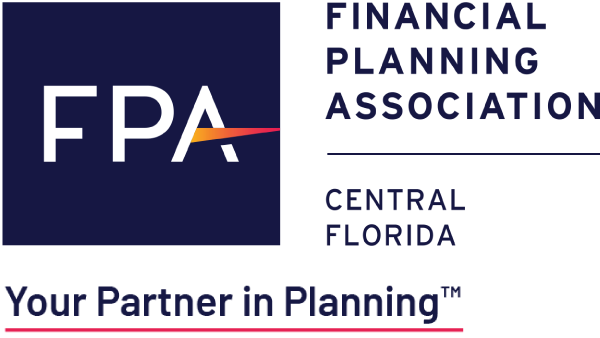
Surviving the Sandwich: A Financial Balancing Act for People with Adult Kids, Aging Parents
 If you’re feeling pressure to provide some kind of financial support to your aging parents as well as to your children while still trying to meet your own monetary goals and obligations, if you find yourself struggling to set your financial priorities because you feel pulled in multiple generational directions, you have company as a member of the Sandwich Generation.
If you’re feeling pressure to provide some kind of financial support to your aging parents as well as to your children while still trying to meet your own monetary goals and obligations, if you find yourself struggling to set your financial priorities because you feel pulled in multiple generational directions, you have company as a member of the Sandwich Generation.
Younger baby boomers and members of Generation X are most likely to find themselves “sandwiched.” A Pew Research Center study from 2015 found that in the United States, nearly half — 47% — of people in the 40-59 age range not only have one or two parents age 65 or older, they are also either raising a young child or have provided financial assistance to a grown child in the preceding 12 months.
In a perfect world, you would have enough money to meet your own financial needs and goals, while also offering financial assistance to an adult child and/or an aging parent if and when they need it. But many people don’t have that luxury. Instead, they’re faced with difficult either-or choices. And sometimes, given the emotions and family dynamics involved, those choices aren’t so clear-cut, says David Emery, a Certified Financial Planner™ with Marshall Financial Group in Doylestown, PA. “You have all these competing forces in play. It takes a lot of thought to sort out.”
Making sense of it all starts with gaining a clearer understanding of those competing forces:
- You (and your spouse/partner). The highest financial priority for most individuals and couples, whether they’re sandwiched or not, should be to set aside enough for a secure retirement, where the nest egg provides a comfortable level of income for as long as it’s needed, according to Emery. For many people, saving enough for retirement, while also addressing current financial needs, is a formidable enough challenge that becomes even more daunting when providing financial support to an aging parent or adult child becomes a consideration.
- Your aging parents. Close to 30% of adults who have a 65+ parent actually provided that parent with financial assistance in the preceding 12 months, according to the Pew study. Providing financial support to an aging parent or parents may take away from the ability to save for your own retirement.
There’s also the financial impact of taking the time to care for an aging parent. According to a separate study by the MetLife Mature Market Institute, nearly 10 million adult children over the age of 50 in the U.S. care for their aging parents. The average worker who does so sacrifices more than $300,000 in lost wages, workplace benefits and Social Security benefits, according to the MetLife analysis.
- Your adult/college-age children: Some 61% of parents with adult children provided financial assistance to an adult child in the preceding 12 months, the Pew study found. That support may take the form of stopgap financial help (such as a loan or a monetary gift) to an adult child who’s struggling to make ends meet, for example, or payments to fund a child’s education (college, post-graduate work, etc.). Here’s another situation where helping an adult or college-age child financially can detract from one’s own retirement savings efforts. “This can be a big stress point, because you love your children and you want the best for them,” notes Emery.
How to avoid being squeezed financially in situations where you feel compelled to offer support to an aging parent, an adult or college-age child, or both? Here are some suggestions:
When possible, pay yourself first. That is, make meeting your financial goals and obligations top priority. Emery’s recommendation: If at all possible, “keep on track with your retirement plan, because while you can’t borrow for retirement, you can borrow to help pay for a college education.” What’s more, the younger a person is, the more time they have to catch up with their retirement savings or to pay off a debt. But with retirement looming closer, you may not have the same margin for error.
Balance emotional factors with financial practicalities. Financial decisions tend to be more clear-cut when emotions are removed from the equation. But because many sandwich situations involve emotionally sensitive family dynamics, those should not be overlooked or downplayed, says Emery. “It comes down to values. If someone really feels strongly about making a child’s college education a top financial priority, for example, then you should account for that.”
Put it all out on the table for discussion. What type of support (financial and otherwise), and how much support, is the sandwiched individual or couple willing and able to provide? Who’s going to pay for what? Does it involve a loan or a gift? How much debt is each party willing and able to shoulder? In the case of a college education, how much aid is available, and in what form? Open communication with each of the involved parties is “very important” to getting everyone engaged and hopefully on the same page in finding answers to questions like these, asserts Emery. If possible, open the dialogue before there’s a financial crunch, to avoid having to make major decisions in the middle of a crisis.
Make a formal plan. As you’re talking through the aforementioned issues, put the details down in writing, as part of a financial plan that you can refer to and update as circumstances dictate. If a loan between family members is involved, for example, be sure to put terms for paying back the loan in writing. This helps all relevant parties stay accountable to the decisions that were made, Emery says. Be sure to revisit the plan when life circumstances and needs change, as they almost certainly will.
Enlist an objective third party for perspective and guidance. Emotions sometimes can derail family financial discussions and impede sound decision-making. A financial professional with expertise handling family finances can serve as a much-needed sounding board, voice of reason, intermediary and strategist in sandwich situations. To find a Certified Financial Planner™ in your area, search the Financial Planning Association’s national database of personal finance experts at www.PlannerSearch.org.
January 2017 — This column is provided by the Financial Planning Association® (FPA®) of Central Florida, the principle professional organization for Certified Financial PlannerTM (CFP®) professionals. FPA is the community that fosters the value of financial planning and advances the financial planning profession and its members demonstrate and support a professional commitment to education and a client-centered financial planning process. Please credit FPA of Central Florida if you use this column in whole or in part.
The Financial Planning Association is the owner of trademark, service mark and collective membership mark rights in: FPA, FPA/Logo and FINANCIAL PLANNING ASSOCIATION. The marks may not be used without written permission from the Financial Planning Association.

